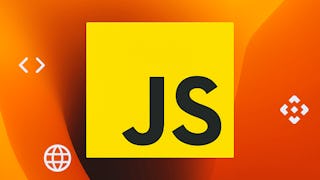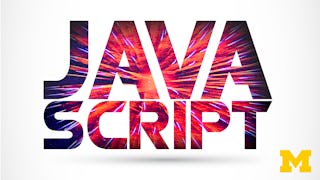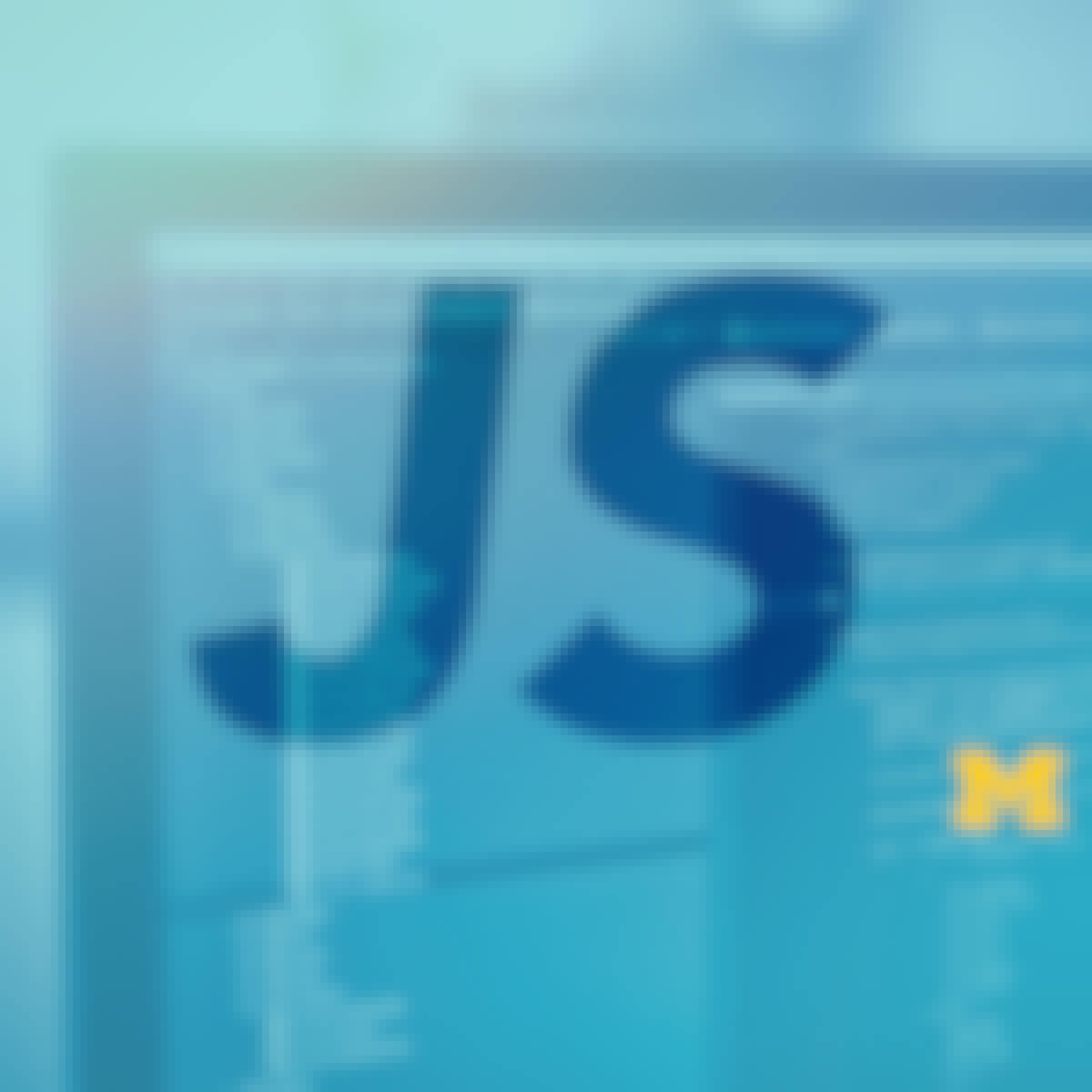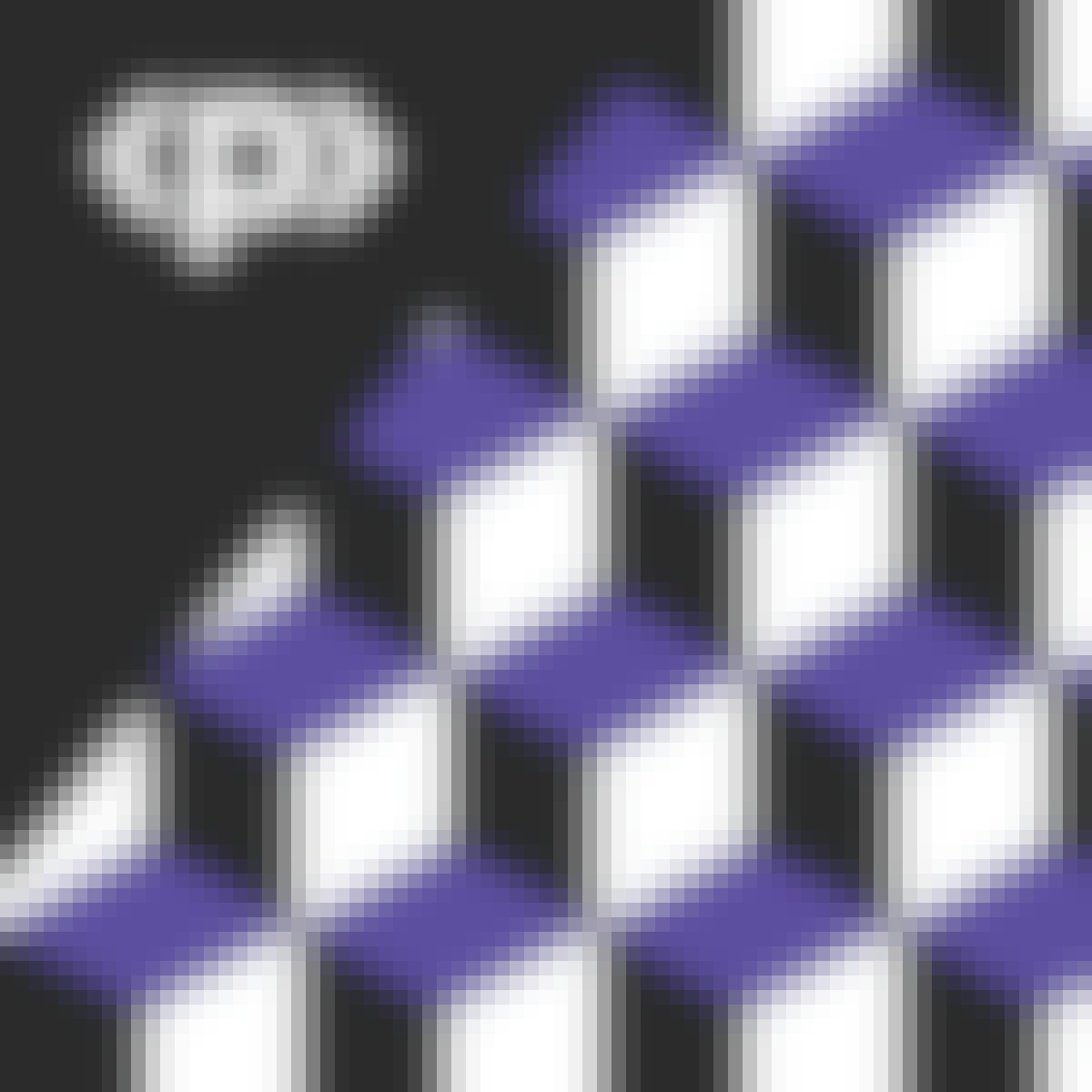- Browse
- Javascript Design Patterns
Results for "javascript design patterns"
 Status: Free TrialFree TrialU
Status: Free TrialFree TrialUUniversity of Alberta
Skills you'll gain: Model View Controller, Software Design Patterns, Software Design, Unified Modeling Language, Object Oriented Design, Code Review, Software Architecture, Programming Principles, Maintainability, Java, Application Design
4.7·Rating, 4.7 out of 5 stars1.4K reviewsIntermediate · Course · 1 - 4 Weeks
 Status: NewNewStatus: Free TrialFree TrialM
Status: NewNewStatus: Free TrialFree TrialMMicrosoft
Skills you'll gain: Responsive Web Design, Git (Version Control System), Web Development, Cascading Style Sheets (CSS), React.js, Version Control, Web Development Tools, Full-Stack Web Development, GitHub, HTML and CSS, Application Design, Software Design Documents, Game Design, Debugging, Software Testing, Unit Testing, Software Documentation, Software Development, Development Environment, Javascript
3.8·Rating, 3.8 out of 5 stars11 reviewsBeginner · Professional Certificate · 3 - 6 Months
 Status: NewNewStatus: Free TrialFree Trial
Status: NewNewStatus: Free TrialFree TrialSkills you'll gain: JSON, Data Structures, Algorithms, Web Development Tools, Javascript, Programming Principles, Development Environment, Integrated Development Environments, Computer Programming, Application Programming Interface (API), Debugging, HTML and CSS, Object Oriented Programming (OOP), Program Development, Computational Thinking, Performance Tuning
Beginner · Specialization · 1 - 3 Months
 Status: Free TrialFree Trial
Status: Free TrialFree TrialSkills you'll gain: Ajax, Javascript, Data Structures, Debugging, JSON, Scripting, Web Development, Web Applications, Computer Programming, Front-End Web Development, HTML and CSS, Event-Driven Programming, Software Development, Object Oriented Programming (OOP), Git (Version Control System), Application Programming Interface (API)
4.6·Rating, 4.6 out of 5 stars163 reviewsBeginner · Course · 1 - 3 Months
 Status: Free TrialFree TrialU
Status: Free TrialFree TrialUUniversity of California, Davis
Skills you'll gain: jQuery, Javascript and jQuery, Ajax, Javascript, Data Manipulation, Data Validation, UI Components, HTML and CSS, Scripting, JSON, Scripting Languages, Event-Driven Programming, Web Development Tools, JavaScript Frameworks, Web Applications, Web Design and Development, Game Design, Application Programming Interface (API), Object Oriented Programming (OOP), Animations
4.7·Rating, 4.7 out of 5 stars1.1K reviewsBeginner · Specialization · 3 - 6 Months
 Status: Free TrialFree TrialU
Status: Free TrialFree TrialUUniversity of Michigan
Skills you'll gain: Javascript, Interactive Design, HTML and CSS, Web Design and Development, Web Content Accessibility Guidelines, Event-Driven Programming, Web Applications, User Interface (UI), Web Development, Data Structures, Programming Principles, Debugging, Data Validation
4.7·Rating, 4.7 out of 5 stars7.4K reviewsBeginner · Course · 1 - 4 Weeks
What brings you to Coursera today?
 Status: NewNewStatus: Free TrialFree TrialM
Status: NewNewStatus: Free TrialFree TrialMMicrosoft
Skills you'll gain: Game Design, Software Development, Development Environment, Software Documentation, Data Validation, Javascript, Debugging, Maintainability, Data Structures, Software Design, Computer Programming, Data Management
3.9·Rating, 3.9 out of 5 stars7 reviewsBeginner · Course · 1 - 4 Weeks
 Status: Free TrialFree Trial
Status: Free TrialFree TrialSkills you'll gain: Node.JS, Restful API, React Redux, Database Design, React.js, Ajax, Database Development, Database Application, Server Side, Full-Stack Web Development, Back-End Web Development, NoSQL, Javascript, JavaScript Frameworks, Front-End Web Development, API Design, Cloud Applications, Data Structures, MongoDB, Debugging
4.4·Rating, 4.4 out of 5 stars1.4K reviewsBeginner · Specialization · 3 - 6 Months
 Status: Free TrialFree TrialU
Status: Free TrialFree TrialUUniversity of Michigan
Skills you'll gain: JSON, jQuery, Javascript and jQuery, Ajax, Debugging, Web Development Tools, Event-Driven Programming, Javascript, PHP (Scripting Language), Object Oriented Programming (OOP), Data Import/Export, Web Applications
4.6·Rating, 4.6 out of 5 stars833 reviewsIntermediate · Course · 1 - 4 Weeks
 Status: Free TrialFree TrialS
Status: Free TrialFree TrialSScrimba
Skills you'll gain: Object Oriented Programming (OOP), Javascript, JSON, Application Programming Interface (API), Scripting, Event-Driven Programming, Software Design Patterns, Data Management, Data Structures, Prototyping, Programming Principles, Debugging, Web Development, Software Development, Software Engineering, Performance Tuning
4.6·Rating, 4.6 out of 5 stars17 reviewsIntermediate · Specialization · 1 - 3 Months
 Status: NewNewStatus: Free TrialFree Trial
Status: NewNewStatus: Free TrialFree TrialSkills you'll gain: Microservices, Scalability, Software Architecture, CI/CD, Continuous Deployment, API Gateway, Containerization, Serverless Computing, Application Design, Continuous Integration, Docker (Software), Software Design Patterns, Systems Architecture, Systems Design, Kubernetes, Service Oriented Architecture, Event-Driven Programming, Transaction Processing, Data Management, Distributed Computing
Intermediate · Specialization · 3 - 6 Months
 Status: Free TrialFree Trial
Status: Free TrialFree TrialSkills you'll gain: Jest (JavaScript Testing Framework), Web Development Tools, Javascript, Unit Testing, Web Applications, Object Oriented Programming (OOP), Scripting Languages, Event-Driven Programming, Node.JS, Scripting, JSON, Computer Programming, Data Structures, Debugging, Package and Software Management, Program Development, Front-End Web Development, Functional Design
4.7·Rating, 4.7 out of 5 stars4.9K reviewsBeginner · Course · 1 - 3 Months
In summary, here are 10 of our most popular javascript design patterns courses
- Design Patterns: University of Alberta
- Microsoft JavaScript Starter Kit: Microsoft
- JavaScript Mastery – Zero to Hero for Interviews: Packt
- JavaScript Programming Essentials: IBM
- JavaScript for Beginners: University of California, Davis
- Interactivity with JavaScript: University of Michigan
- Introduction to JavaScript Programming: Microsoft
- JavaScript Programming with React, Node & MongoDB: IBM
- JavaScript, jQuery, and JSON: University of Michigan
- Advanced JavaScript: Scrimba
Frequently Asked Questions about Javascript Design Patterns
JavaScript Design Patterns are reusable and proven solutions to common problems that developers face while designing and developing JavaScript applications. These patterns help in organizing code, improving code maintainability, and promoting code reusability. They provide a set of best practices and guidelines for structuring and architecting JavaScript code.
Some commonly used JavaScript Design Patterns include:
Module Pattern: This pattern helps in encapsulating and organizing code by creating modules with private and public members and methods.
Singleton Pattern: It ensures that only a single instance of a class is created and provides a global point of access to it.
Observer Pattern: This pattern defines a one-to-many dependency between objects, so that when one object changes state, all its dependents are notified and updated automatically.
Factory Pattern: It provides an interface for creating objects, but allows subclasses to decide which class to instantiate.
MVC (Model-View-Controller) Pattern: This architectural pattern separates the application logic into three interconnected components - the model (data and business logic), the view (user interface), and the controller (mediator between the model and view).
Prototype Pattern: It involves cloning existing objects instead of creating new ones, thereby reducing the overhead of creating objects from scratch.
- Decorator Pattern: This pattern allows adding new functionalities or behaviors to an object dynamically without affecting its existing structure.
Understanding and implementing JavaScript Design Patterns can significantly improve the quality, maintainability, and extensibility of JavaScript applications. It is essential for developers to study and apply these patterns to write efficient and scalable code.
To learn JavaScript Design Patterns, you will need to acquire a solid understanding of the following skills:
JavaScript Fundamentals: Start with a strong foundation in JavaScript programming language. Learn about variables, data types, loops, conditionals, functions, and other key concepts.
Object-Oriented Programming (OOP): Familiarize yourself with the principles of OOP, such as encapsulation, inheritance, and polymorphism. JavaScript Design Patterns often rely on OOP concepts to organize and structure code.
Design Patterns Concepts: Gain knowledge of design patterns concepts, including the various types such as creational, structural, and behavioral patterns. Understand their purpose, benefits, and how they can be applied to solve common software design problems.
Modularization and Modularity Patterns: JavaScript Design Patterns often involve breaking down code into modular and reusable components. Learn about module pattern, revealing module pattern, and the usage of modules and namespaces.
Architectural Patterns: Explore architectural patterns like MVC (Model-View-Controller), MVP (Model-View-Presenter), or MVVM (Model-View-ViewModel). Understand how these patterns help in organizing code structure and separating concerns.
Asynchronous Programming: JavaScript heavily relies on asynchronous operations, and understanding how to handle asynchronous tasks using callbacks, promises, or Async/Await syntax is crucial for implementing design patterns effectively.
Observer and Publish/Subscribe Patterns: Familiarize yourself with these patterns that involve maintaining a list of subscribers and notifying them of any changes or events. They are commonly used in JavaScript application development.
Functional Programming Concepts: JavaScript Design Patterns often utilize concepts from functional programming, such as higher-order functions, closures, and immutability. Understanding functional programming principles will be beneficial.
Error Handling: JavaScript Design Patterns typically involve handling errors gracefully. Learn about error handling techniques, error logging, and how to implement robust error-handling mechanisms.
- Testing and Debugging: Acquire knowledge of testing frameworks and tools specific to JavaScript, like Jasmine or Jest, and understand debugging techniques to identify and resolve issues in your code.
By acquiring these skills, you will be well-prepared to study and apply JavaScript Design Patterns efficiently.
With JavaScript Design Patterns skills, you can pursue various job opportunities in web development and software engineering. Some of the specific job roles you can consider are:
Front-End Developer: JavaScript Design Patterns are essential for building interactive and user-friendly web applications. As a front-end developer, you would be responsible for creating and maintaining the user interface using JavaScript and other related technologies.
Full-Stack Developer: Having expertise in JavaScript Design Patterns allows you to not only handle the front-end but also work with server-side technologies and databases. As a full-stack developer, you can develop end-to-end solutions for web applications.
JavaScript Developer: JavaScript Design Patterns are fundamental for anyone working extensively with JavaScript. With this skill set, you can specialize in JavaScript development, utilizing the best patterns and practices to create efficient and scalable code.
Software Engineer: JavaScript is widely used in various software projects, including mobile applications, desktop applications, and server-side development. With JavaScript Design Patterns skills, you can contribute to the design and development of software systems using JavaScript.
Application Developer: JavaScript Design Patterns are crucial for developing applications that can be deployed on different platforms, including web, mobile, and desktop. As an application developer, you can leverage your skills to build performant and robust applications.
UI/UX Developer: User Interface (UI) and User Experience (UX) go hand in hand in creating visually appealing and intuitive web applications. By mastering JavaScript Design Patterns, you can enhance your UI/UX skills, enabling you to build engaging user interfaces.
Technical Consultant: With expertise in JavaScript Design Patterns, you can work as a technical consultant, advising businesses on the best practices and patterns to follow in their software development projects using JavaScript.
- Instructor or Trainer: Sharing knowledge is a valuable opportunity with JavaScript Design Patterns skills. You can become an instructor or trainer, providing guidance and teaching others about JavaScript Design Patterns and their practical implementation.
Remember, this list is not exhaustive, and your skills in JavaScript Design Patterns can be transferable to various job prospects across the technology sector.
People who have a basic understanding of JavaScript and are interested in improving their coding skills and knowledge of software design principles would be best suited for studying JavaScript Design Patterns. Additionally, individuals who are already familiar with object-oriented programming concepts and want to learn how to apply them effectively in JavaScript would also benefit from studying JavaScript Design Patterns.
Some possible topics related to JavaScript Design Patterns that you can study include:
Singleton Pattern: Learn how to implement a pattern that restricts the instantiation of a class to a single object and provides global access to that object.
Factory Pattern: Understand how to create objects without exposing the instantiation logic to the client, allowing the subclass to decide which class to instantiate.
Observer Pattern: Explore how to define a one-to-many dependency between objects where changes in one object will automatically notify and update all its dependents.
Decorator Pattern: Discover how to dynamically add new functionality to existing objects by wrapping them with additional layers of behavior.
Module Pattern: Learn about creating encapsulated modules, which can have private and public methods, thereby allowing encapsulation and providing a clean structure.
Prototype Pattern: Study how to create objects by cloning existing objects and implementing a prototype chain, which helps avoid expensive object creation operations.
Command Pattern: Understand how to encapsulate a request as an object, thereby allowing clients to parameterize clients with queue requests, undo operations, and support transactions.
Proxy Pattern: Explore how to create a surrogate object, acting as a placeholder for another object, and controlling access to it.
MV* Architectural Patterns: Investigate various architectural patterns such as Model-View-Controller (MVC), Model-View-ViewModel (MVVM), and Model-View-Presenter (MVP) that help organize the codebase and separate concerns.
- Promises and Async/Await: Deep dive into handling asynchronous operations in JavaScript using promises and the newer async/await syntax.
Remember, there are numerous resources available online, including tutorials, articles, books, and video courses, that can help you further your understanding of these topics in JavaScript Design Patterns.
Online JavaScript Design Patterns courses offer a convenient and flexible way to enhance your knowledge or learn new JavaScript Design Patterns are reusable and proven solutions to common problems that developers face while designing and developing JavaScript applications. These patterns help in organizing code, improving code maintainability, and promoting code reusability. They provide a set of best practices and guidelines for structuring and architecting JavaScript code.
Some commonly used JavaScript Design Patterns include:
Module Pattern: This pattern helps in encapsulating and organizing code by creating modules with private and public members and methods.
Singleton Pattern: It ensures that only a single instance of a class is created and provides a global point of access to it.
Observer Pattern: This pattern defines a one-to-many dependency between objects, so that when one object changes state, all its dependents are notified and updated automatically.
Factory Pattern: It provides an interface for creating objects, but allows subclasses to decide which class to instantiate.
MVC (Model-View-Controller) Pattern: This architectural pattern separates the application logic into three interconnected components - the model (data and business logic), the view (user interface), and the controller (mediator between the model and view).
Prototype Pattern: It involves cloning existing objects instead of creating new ones, thereby reducing the overhead of creating objects from scratch.
- Decorator Pattern: This pattern allows adding new functionalities or behaviors to an object dynamically without affecting its existing structure.
Understanding and implementing JavaScript Design Patterns can significantly improve the quality, maintainability, and extensibility of JavaScript applications. It is essential for developers to study and apply these patterns to write efficient and scalable code. skills. Choose from a wide range of JavaScript Design Patterns courses offered by top universities and industry leaders tailored to various skill levels.
When looking to enhance your workforce's skills in JavaScript Design Patterns, it's crucial to select a course that aligns with their current abilities and learning objectives. Our Skills Dashboard is an invaluable tool for identifying skill gaps and choosing the most appropriate course for effective upskilling. For a comprehensive understanding of how our courses can benefit your employees, explore the enterprise solutions we offer. Discover more about our tailored programs at Coursera for Business here.










